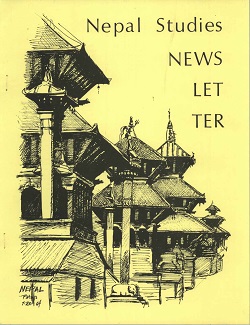Author Biography
Scott Waldron is a Senior Research Fellow in the School of Agriculture and Food Sciences at The University of Queensland. He grew up on a beef cattle farm in western Queensland, has undergraduate degrees in Asian Studies and a PhD in Agricultural Economics. He is fluent in Chinese and has conducted fieldwork for more than one month in each of 18 provinces of China and much longer periods in western China. He has published widely on ruminant livestock systems in China, covering the areas of: production economics and grasslands management; agribusiness and value chains; policy and institutional reform; and agricultural and rural development.
Pubuzhuoma is an Assistant Research Fellow at the Division of International Cooperation and Training Centre at the Tibetan Academy of Agriculture and Animal Husbandry Sciences (TAAAS). She grew up on a farm in Ngari Prefecture, has an undergraduate degree in agronomy from the Southwest Agriculture University in Chongqing and a Masters degree in Plant Health and Biosecurity from Adelaide University. She is fluent in English and has conducted fieldwork throughout Tibet. Her research interests are: agricultural and rural development; agricultural extension; and agricultural value chains.
Colin Brown is an Associate Professor in agricultural and resource economics in the School of Agriculture and Food Sciences at The University of Queensland. Colin has been involved in agricultural economics research in China since 1990 and in particular research on ruminant livestock industries, integrated crop-livestock systems, grassland management, rural development, and food safety. He has conducted around one month’s fieldwork each year in China since 1990 in 16 provinces, autonomous regions and municipalities both in agricultural and pastoral areas and has been involved in research in Tibet since 2008. He has written has 10 books, 50 articles, 29 book chapters, 22 major reports and monographs, 31 conference papers and 18 discussion papers most of which relate to China.
Wujincuomu is an Assistant Research Fellow at the Animal Husbandry and Veterinary Research Institute of the Tibetan Academy of Agriculture and Animal Husbandry Sciences (TAAAS). She has a Bachelors degree from the Animal Medical College of Northwest Sci-Tech University of Agriculture and Forestry and her research interests are in preventive veterinary medicine, Tibetan veterinary herbal medicine and animal epidemic diseases. She has participated in 19 research projects and published 23 academic papers at TAAAS.
Jin Tao graduated from the Tibet College of Agriculture and Livestock with a Bachelor of Agricultural Science Degree. He has worked at the Tibet Agricultural Research Institute of the Tibetan Academy of Agriculture and Animal Husbandry Sciences (TAAAS) since 1994, has become a Researcher at TAAAS, and Assistant Director of Research Institute on Agricultural Resource & Environment. He was born in Tibet, leads programs in barley breeding and forage development and has an in-depth knowledge of cropping and socio-economic systems throughout agricultural areas of Tibet.
Wei Na is an Assistant Research Fellow at Agricultural Product Quality Standards and Testing Institution of the Tibetan Academy of Agriculture and Animal Husbandry Sciences (TAAAS). She has undergraduate and Masters degrees in agronomy from TAAAS and her research interests are in plant nutrition, the quality and safety of agricultural products and soil ecology.
Abstract
Rural Tibet has been confronted with a series of new and major forces over the last decade including new opportunities to work off-farm and to collect caterpillar fungus, buoyant food markets, and after decades of neglect, renewed policy attention to agriculture. This paper examines semi-subsistent agricultural structures at the household level, as the base from which rural Tibetans pursue livelihood strategies and adapt to new opportunities and challenges. With small land sizes and precarious food balances, agricultural households have been given a boost through rising prices and increased policy attention to agriculture that manifests itself at local levels. This has increased household wealth and reduced vulnerability, but with very low surpluses has had a limited effect on cash income, the vast majority of which must still be sourced off-farm. Thus, semi-subsistence agriculture provides a “pathway out of poverty” including into the non-farm sector but the transition will not be linear, and will be influenced by forces that, if recent history in rural Tibet is a guide, will not be static. The paper documents the way that these forces have played out at the household level in the case study township of Duopozhang in Shannan Prefecture between 2010 and 2015. Analysis is based on an agricultural-economic-biophysical household model populated by detailed household surveys, and contextualised and cross-verified with detailed primary and secondary data at township up to autonomous region levels. This may shed light on recent developments in agricultural areas of Central Tibet that are not easily accessible and not widely reported in recent years.
Acknowledgements
We would like to thank the agencies that supported the research especially the Australian Centre for International Agricultural Research (ACIAR) and the Tibetan Academy of Agricultural and Animal Husbandry Sciences (TAAAS), within which we worked with the Tibetan Agricultural Research Institute (TARI), the Tibetan Livestock Research Institute (TLRI) and the Farmer Training Centre (FTC). We would like to acknowledge the support of Nyima Tashi, Tsezhu, Tsamyu and Yang Yong. Numerous Australian researchers contributed to the research including Nicole Speigel, Tim Heath, John Wilkins, John Piltz, Annie McNeill, Carol Rose, Nick Costa, David Coventry and Graham Lyons. Households and officials in Duopozhang have been generous with their time and hospitality for our visits, and we hope this research can contribute to understanding and livelihoods in the region
Creative Commons License

This work is licensed under a Creative Commons Attribution 4.0 License.
Recommended Citation
Waldron, Scott; N/A, Pubuzhuoma; Brown, Colin; N/A, Wujincuomu; Jin, Tao; and Na, Wei. 2016. Agricultural Development in a Tibetan Township. HIMALAYA 35(2).
Available at:
https://digitalcommons.macalester.edu/himalaya/vol35/iss2/7


